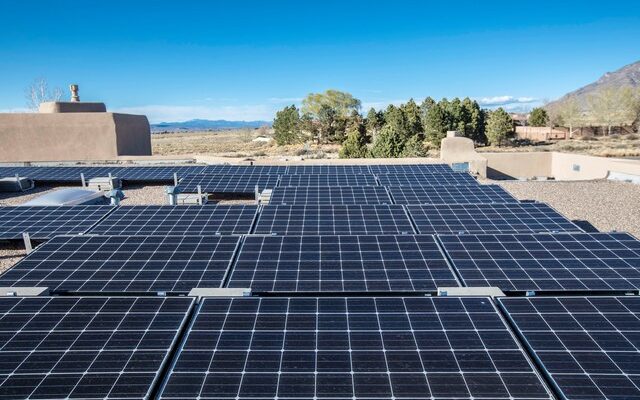The world is rapidly moving towards sustainable solutions to combat the pressing issue of climate change. Among the various renewable energy sources, solar energy stands out as a beacon of hope for a greener and cleaner tomorrow. As the demand for renewable energy rises, many homeowners are looking to harness solar power to meet their electricity needs and contribute to a more sustainable world.
In this article, we will explore the incredible potential of solar energy and how you can harness it at home to power a more sustainable future.
Understanding Solar Energy
Solar energy is the conversion of sunlight into electricity using solar panels. These panels, often made of photovoltaic (PV) cells, absorb sunlight and release electrons, generating an electric current. The electricity produced can power your home’s appliances, lighting, heating, and more. Solar energy is a renewable and inexhaustible resource, making it an ideal alternative to fossil fuels.
Assessing Your Home’s Solar Potential
Before diving into the world of solar energy, it is crucial to assess your home’s solar potential. Conducting a solar site analysis involves evaluating the sun exposure and shading around your property. An unobstructed south-facing roof with minimal shading is ideal for maximum solar energy generation. However, even homes with less-than-perfect conditions can benefit from solar installations.
Choosing the Right Solar System
Solar systems come in various configurations, such as grid-tied and off-grid setups. Grid-tied systems are connected to the local electric grid, allowing you to sell excess electricity back to the utility company through net metering. Off-grid systems, on the other hand, function independently and store excess energy in batteries for use during non-sunny periods.
When selecting a solar system, consider factors like the size of your home, electricity consumption, and budget. Solar panels’ efficiency and longevity, along with the quality of other system components, should be evaluated to ensure optimal performance and reliability.
Financing Your Solar Project
Solar installations require an initial investment, but the long-term savings and environmental benefits often outweigh the costs. Many governments and municipalities offer financial incentives, tax credits, and rebates to promote solar adoption. Federal, state, and local programs may be available to help offset installation expenses.
Additionally, several financing options, such as solar loans and leasing agreements, allow homeowners to go solar without substantial upfront costs. These financing solutions enable you to pay for your solar system gradually while still enjoying the benefits of renewable energy.
Finding a Reputable Solar Contractor
A crucial step in adopting solar energy is finding a reputable solar contractor. Research various solar installation companies in Indiana and read customer reviews to gauge their reliability and customer satisfaction. Request quotes from multiple contractors to compare pricing and services offered. A knowledgeable and experienced solar contractor can guide you through the entire process and ensure a smooth installation.
The Solar Installation Process
Once you’ve selected a solar contractor, the installation process can begin. Before installation, your home may require some preparations to ensure a seamless setup. Solar panels will be carefully mounted on your roof or, if suitable, on the ground. The installation timeline may vary depending on the size and complexity of your system, but experienced contractors can typically complete the process within a few days.
Maximizing Solar Energy Use
In addition to harnessing solar energy, maximizing its use within your home is essential for maximum efficiency and cost-effectiveness. Implement energy-efficient practices such as LED lighting, programmable thermostats, and energy-efficient appliances to reduce overall electricity consumption. Smart home technologies can optimize energy usage by automatically adjusting settings based on your needs and preferences.
Monitoring your solar energy production and consumption allows you to track how much energy your system generates and how much you use. By adjusting your electricity usage patterns, you can further reduce reliance on the grid and increase your home’s self-sufficiency.
Maintenance and Care for Solar Panels
Regular maintenance of your solar panels is essential to ensure they operate at their highest capacity. Most solar systems require minimal maintenance, primarily consisting of periodic cleaning to remove dust and debris that can hinder sunlight absorption. It is essential to monitor your system’s performance and address any issues promptly. In many cases, solar panels come with extensive warranties, offering peace of mind for years to come.
The Environmental Impact of Solar Energy
Switching to solar energy has a positive impact on the environment. By generating clean and renewable electricity, your home reduces its carbon footprint and dependence on fossil fuels. Over the lifetime of your solar system, you can prevent significant amounts of greenhouse gas emissions, contributing to a healthier planet for future generations.
Conclusion
Embracing solar energy is not only an investment in your home but also an investment in a greener tomorrow. By harnessing the power of the sun, you can reduce your carbon footprint, lower your electricity bills, and contribute to a more sustainable future. With advancements in solar technology and various financial incentives, adopting solar energy has become increasingly accessible and rewarding. As you embark on your solar journey, take pride in knowing that your decision is making a significant positive impact on the environment and shaping a brighter future for generations to come.


